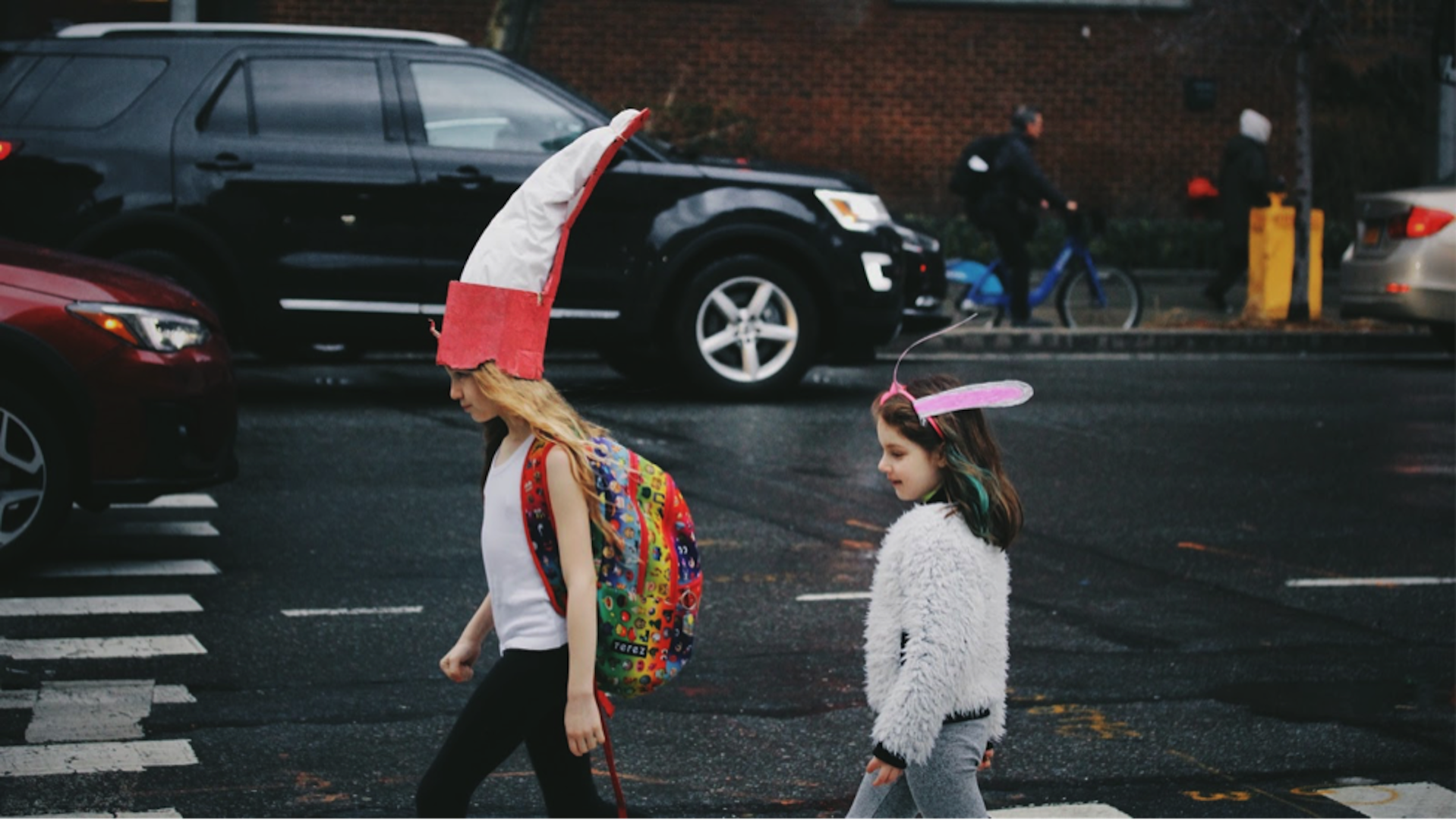You may have seen them in Waterloo Region this month: fluorescent vests bookending a line of backpack wearing kids on their way to school.
The people wearing the vests are walking school bus volunteers. Walking school buses are just like regular school buses but instead of a big yellow bus stopping to pick kids up along the way, it’s volunteers walking a set school route with “stops” along the way.
“We want walking to be the norm for children here and we know it’s not right now,” says Colleen Cooper, who coordinates the walking school bus program in the region. “The goal of the program is to reset the norm.”
The Canadian Cancer Society has partnered with Block Parents to pilot walking school buses in Waterloo Region. The three-year pilot — which began last year — is funded through the Ontario Trillium Foundation. The program is targeting kids who live in the “walk zone” — 1.6 kilometres from school.
In Canada, 80 percent of kids live less than 1.6 kilometres from school, but only 25 percent walk or bike there.
“Many people think the way to get a child to school is to put them in a car and drive them there,” says Cooper.
It’s healthier for kids to walk or bike to school — we all know that. But are we designing our streets with active transportation in mind?
One Canadian study found that children who walk to school are less exposed to air pollution than those who ride in cars or buses.
The Canadian Cancer Society is involved in the walking school bus program because many kids aren’t getting at least an hour of exercise a day and lack of physical activity is a risk factor for many types of cancer, says Cooper.
Walking to and from school is a simple, no-cost way to boost a child’s activity levels.
And it’s not just kids who benefit from daily walking. According to Canada Walks, an organization that seeks to create and promote active transportation in Canada, health-related problems caused by inactivity costs Canadians $5.3 billion.
That’s the bad news.
The good news? Small changes can have a huge impact.
The risk of obesity goes down five per cent for every kilometre walked daily, according to Canada Walks. Daily walking also improves mental health and lowers the risk of dementia and cancer. There are a lot of benefits for simply putting one foot in front of the other.
But walkability relies on street design.
If streets aren’t designed for walking, parents will feel uneasy about their kids getting to school on their own.
The University of British Columbia (UBC) recently premiered a documentary on the importance of letting kids run free.
The documentary, called Running Free: Children’s Independent Mobility, features researchers from UBC, who say that kids who are allowed to run free have more confidence in their ability to navigate the world, but that parents don’t let them because they’re worried about safety.
One way to address that concern, the researchers argue, is to make streets safer for kids by calming traffic, lowering speed limits around parks, and even equipping kids with a cell phone for emergencies.
Walking school buses also help keep cars off the roads, cutting congestion and air pollution.
And streets around schools are safer when parents don’t drive their kids.
A study published in 2016, looked at driving behaviours around 118 Toronto schools and found dangerous driving behaviours at 88 percent of them.
“Life can become more civilized if we get into walking mode,” says Cooper.
Waterloo Region was chosen for the walking school bus pilot because there’s already a movement to boost active transportation in the area, says Cooper.
The City of Kitchener has put in place a plan to build complete streets — streets designed for all types of users, starting first with pedestrians. The City of Waterloo recently unveiled a new streetscape on a stretch of King Street in Uptown Waterloo that features separated bike lanes and wider sidewalks that make walking and cycling a more comfortable experience.
Walking has health benefits but there are economic benefits as well.
Lancaster, a city in California, saw job growth and boosted property values after it redesigned its streetscape to increase walkability. The city’s redesigned streetscape has won awards and seen traffic collisions cut in half since it began redesigning some of its downtown streets to become more pedestrian-friendly in 2008.
As the case in Lancaster shows, walkability relies on access to streets that are designed for pedestrians, not just cars.
So it’s not just about whether kids are too lazy to walk — or whether parents are too worried to let them.
It’s about whether our streets and neighbourhoods are designed for walking, not just to and from school, but everywhere.
Interested in volunteering or starting a walking school bus? Contact Colleen Cooper at wsb@ontario.cancer.ca or 226-339-2021.





